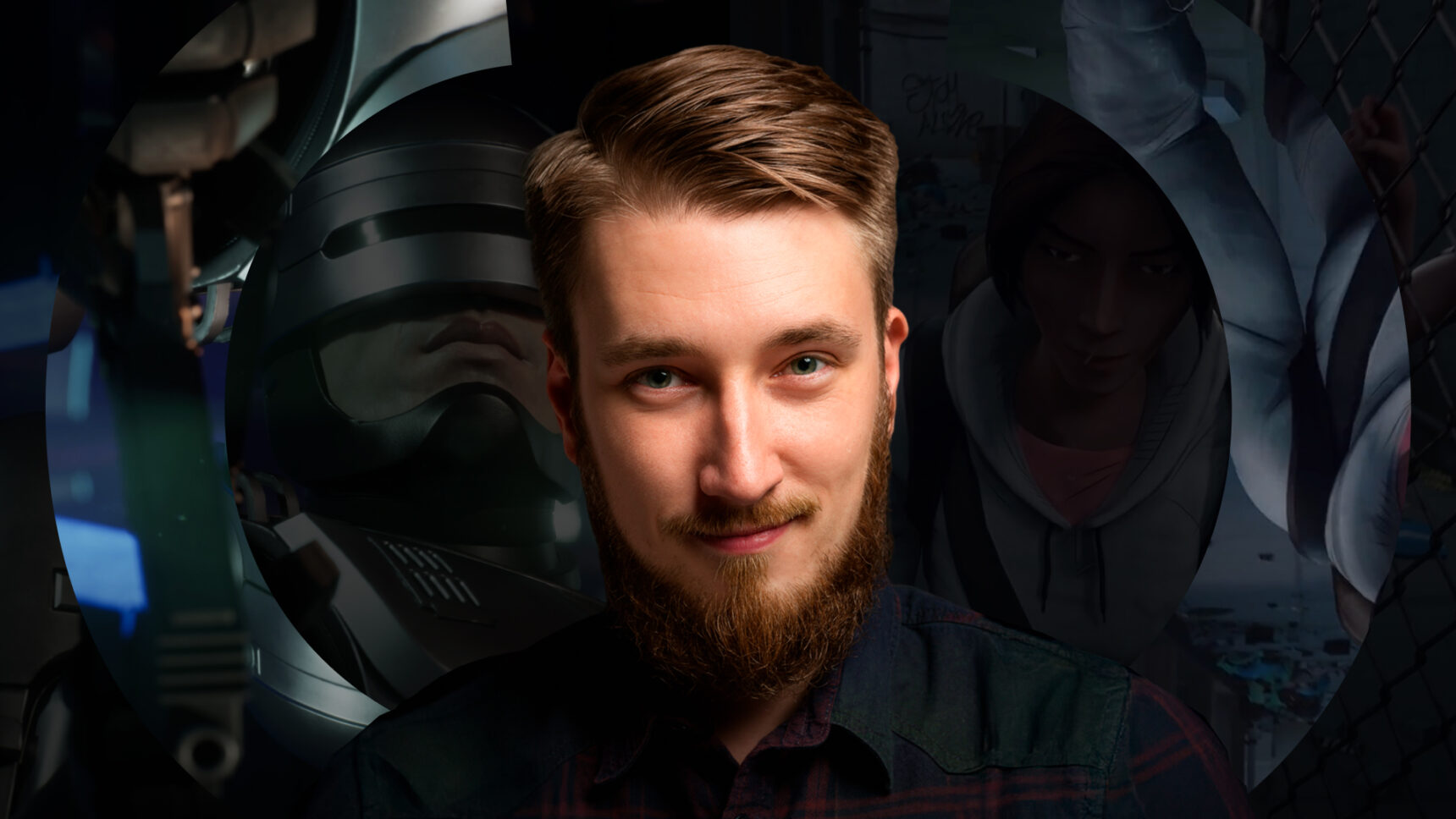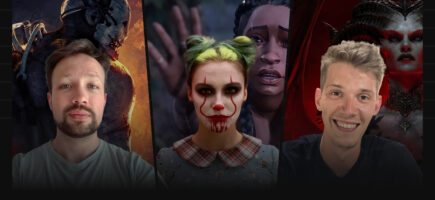Trailers vs Cinematics: One skill, two approaches

The most popular articles
To the uninitiated, the skills behind producing a great game trailer and crafting a high-quality videogame cinematic might appear to be one and the same. And yet, a little like the contrast between making a hit TV show and directing a full feature length movie, there are some subtle but significant differences across the two approaches. Differences that only an expert in creating both would ever be able to explain in detail.
Enter Sergey Egorov. The Trailer & Cinematics Director at Room 8 Group’s Heroic studio, he’s spent the past seven and a half years here producing powerful animated promos to generate high-level hype, and compelling cinematic cutscenes that draw gamers deeper into their digital adventures.
We sat down with Sergey for an eye-opening look at his craft, starting with one simple question…
What’s the biggest difference between making game trailers and cinematics?
“It’s really about where the video I’m working on is going to live once it’s published” starts Sergey. “Trailers and cinematics are both built to tell stories, but the context of where the audience experiences them is very different. That can create a dramatic difference between the kinds of stories we tell in each format, and how we can influence the viewer or player to feel and do different things.”
First, we’ll look at what that means for trailers.
Unique considerations behind game trailer creation
“A trailer could end up anywhere,” says Sergey. “Whether it’s in a deck for a presentation, shown in a cinema, on TV as a commercial or published online as a YouTube video or paid ad.
“So as a game trailer maker, that means I have to focus on getting the viewer’s attention straight away. I can do that in a number of ways, considering impactful aspects that I wouldn’t when I’m making an in-game cinematic.”
Asked for an example, he gives three:
Appeasing online censorship
“Often there’s a natural tension between what a game lets players do and what we can show in the trailer without being censored,” says Sergey.
“For example, in 2023 we worked with Teyon on the launch trailer for RoboCop: Rogue City—this huge, cult classic 1980s movie series reimagined as a modern, crime-fighting first-person shooter.
“RoboCop is quite a violent fiction and the game lets you dismember your enemies in a pretty graphic way. That’s great for gamers, at least those who are old enough to play it, but as the trailer’s director I had to consider how much of that was appropriate to show on YouTube.
“Our solution had two parts. First, we limited the amount of blood we showed by turning off exploding headshots, which usually splashed the screen with blood. Next, we leaned less on the visuals and more on the sound design. So, we would swipe the camera to the next enemy but still let the viewer hear all the ugly sounds happening to the enemies, just without showing it. That let us show footage that felt authentic to the game, without the final trailer ending up behind an age gate.”
Concealing spoilers—OR purposely hinting at them
“Spoilers can present a pretty fine line for someone like me to walk. One classic example of avoiding them is the 2001 E3 trailer for Metal Gear Solid 2,” says Sergey. It showed the series’ main character Solid Snake in gameplay situations, but when the game came out, gamers weren’t playing as Snake—it was a new character, Raiden. The trailer’s director intentionally misled players to conceal the story’s biggest twist, which only increased the impact when gamers got to play the final game.”
“In other trailers, rather than hiding something, you might want to tease it without fully spoiling it,” he continues. “So, you keep the full big reveal for a cutscene in the game itself. The MGS2 trailer from TGS 2001 a few months later did this incredibly well.
“Towards the end it includes the voice of Liquid Snake from MGS1, so players are wondering, ‘Is he alive?’ Then it shows this short, dramatic shot of MGS2’s main villain, Solidus, who players don’t know at that point, looking like the series’ legacy bad guy, Big Boss. Both are designed to reveal a small tidbit while creating curiosity and speculation in the fans about the rest of the game’s content. You do have to know your audience incredibly well to pull this off, but if your series has the cachet, it can be incredibly effective.”
Removing the gameplay grind
“Sometimes we’re asked to create a trailer that shows gameplay progression. But how do you do show hours of gameplay in only a few minutes? You have to find a more cinematic way,” says Sergey.
“We had this challenge with Persist Online, which is a survival co-op horror game where players team up to fight for territory and supplies, against bandits and zombies. So we thought really carefully about the most compelling, action-packed aspects of the core gameplay loop and how to show them without the slower parts. An ‘all killer, no filler’ approach.
To solve that challenge we then created this scenario where one of our teammates has been shot in the leg and is wounded, so we can’t move quickly. One character is carrying the wounded guy, the other is slowly opening doors, checking out if it’s safe. It’s incredibly tense.
“To make sure all of that was realistic, we acted out and recorded the scenes so that our movements were as authentic as possible. Then in the trailer we presented it from a first-person perspective and decided to speed up time whenever the point of view character blinked. That allowed us to take out hours of gameplay grind, moving speedily from scene to scene to tell this tight, dramatic story offering a small snapshot of the full game.”
The differing goals of videogame cinematics
“By contrast to trailers, when I’m directing cinematics, I know I have the audience’s full attention,” says Sergey. “My job here is not just telling a story—it’s connecting that story to the gameplay and encouraging the player to keep playing.
Asked for examples, he again offers three:
Presenting new gameplay features
“Sometimes a client needs us to create a cinematic that shows the main character’s progression through new skills, abilities or power-ups,” says Sergey. “And although these kinds of cinematics aren’t interactive, like a quick time event, often they flow straight into actual gameplay.
“For instance, in Horizon Zero Dawn, there’s a scene where main character Aloy finds a vital item called a Focus which in gameplay terms she then uses to scan objects and enemies through the rest of the game, revealing backstory and gameplay information like enemy weaknesses and patrol routes. It also serves as a plot device to help her communicate with characters across vast distances. It’s a pretty powerful MacGuffin.
“Straight after finding the Focus, the player goes from watching Aloy to controlling her in a tutorial for her new ability. It’s a seamless switch that helps to show one of the big differences between creating videogame trailers and in-game cutscenes: Trailers present an overview; cinematics give the small, vital details that sets up the next phase of gameplay.”
‘Showing’ in-world aspects that the UI typically ‘tells’
“One thing that cutscenes and trailers both share is the way they tend to downplay the on-screen user interface (UI) that’s on the screen during gameplay.
With trailers, though, you don’t really have a choice—it looks strange if it’s on there so prominently, even during gameplay footage, taking the viewers’ focus away from where you’re trying to direct it.
“But cutscenes—particularly in-engine ones, rather than pre-rendered cinematics—offer just a brief pause until the player regains control and the UI comes back on screen. That means we have two different ways of giving the player the same information. The game’s UI tells them, while the cutscene delivers deeper immersion by viscerally showing them.
“Take The Last of Us II, which I’m actually playing at the moment. I’m consistently amazed by what Naughty Dog has done here because, dang, it’s a consistent experience,” he smiles.
“The cutscenes feel like a natural continuation of gameplay specifically because they use these tricks to immerse you in the world. When Ellie gets given her rifle and checks the ammo in the chamber… that’s not something they had to put in. It’s an extra touch that shows the game was built with love, care, and complete attention to detail.”
Developing characters and story between gameplay
“A lot of videogames offer a power fantasy that lets the player do all kinds of things they couldn’t in real life,” explains Sergey. “My job as a cinematics director is sometimes to offset that by creating a scene that humanizes the characters.
“One of the most obvious examples is the Uncharted series. Controlling Nathan Drake, players can kill dozens of bad guys in a level, and hundreds across the game. But when the script needs it, the cutscene can make the player suspend disbelief long enough to show Drake as a fully rounded person, with compassion, or concern, or indecision, or kindness. That can develop his relationships with the others in his life. The gameplay may be over the top, but the cinematics keep him grounded.
“Those often aren’t emotions we’re seeking to elicit in a big bombastic launch trailer,” adds Sergey. “Making cinematics is different precisely because they don’t just set the conditions for the next stretch of gameplay; they can convey those quieter, more emotional moments that allow the player to really relate to the protagonist and feel fully invested in the story the game is telling.”
Need a ready-made trailers team or expert support with in-game cinematics?
Sergey’s insights come from a pool of decades of combined experience across Room 8 Group’s Heroic studio. Our talented trailers and cinematics team have worked on AA and AAA game releases, as well as high-profile TV shows, and even feature films. Together, they’ve built a body of work you can trust, and specialist knowhow that can support studios of every size in bringing great games to market.
To learn how we could help you, reach out—let’s talk.




